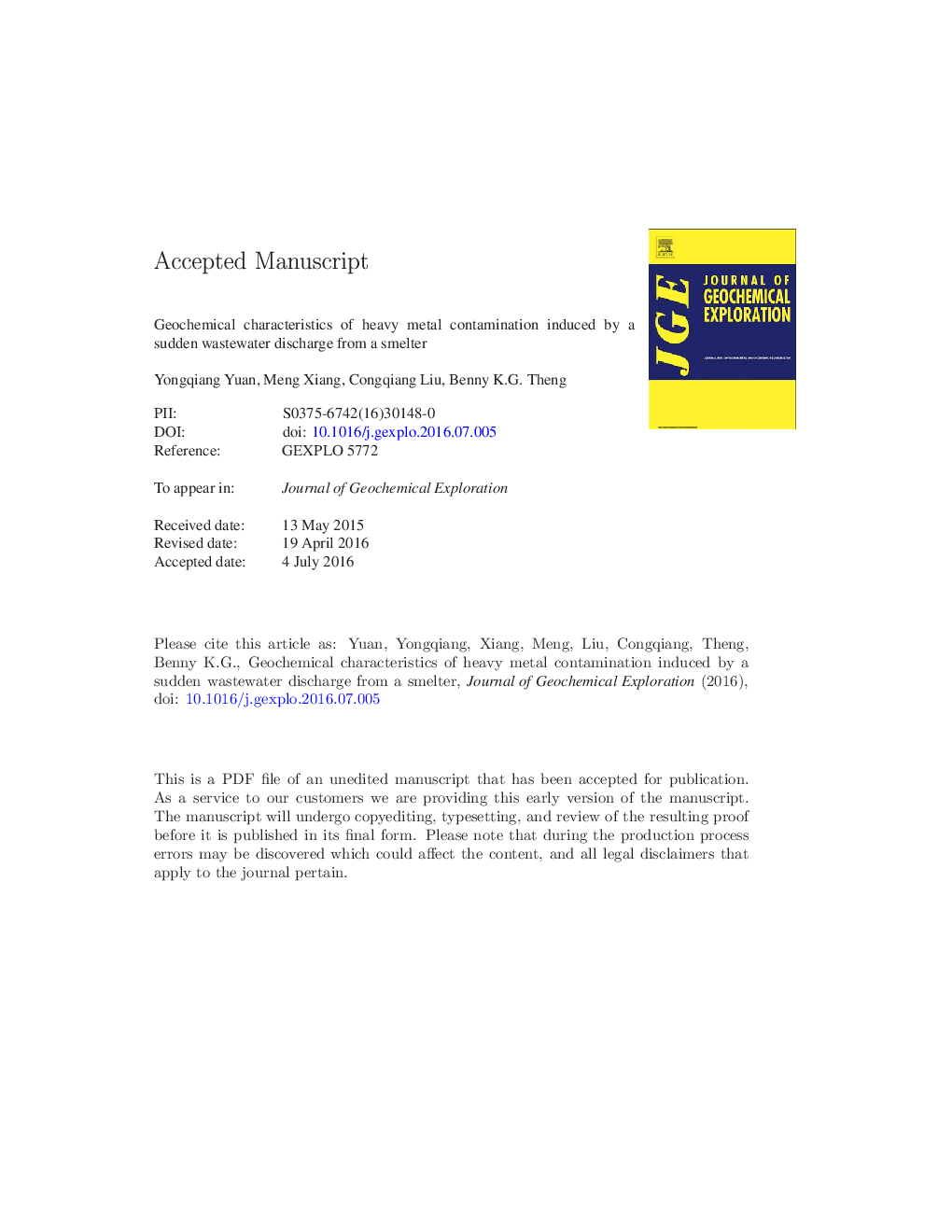| Article ID | Journal | Published Year | Pages | File Type |
|---|---|---|---|---|
| 5754451 | Journal of Geochemical Exploration | 2017 | 36 Pages |
Abstract
Metal contaminations from smelting have been widely reported, however, the study on metal mobility or transfer characteristics in soil profiles after a sudden wastewater overflow is far limited. This study was undertaken to investigate distribution and potential mobility of heavy metals in soils flooded by smelting wastewater in Hechi, China. Total heavy metal/metalloid levels were measured in topsoil, profile and profile pore-water taken in-situ. Enrichment factor (EF) and nemero synthesis index (PN) were used to detect the contribution of anthropogenic emissions to trace element fluxes and pollution levels, respectively. Soil-water partition coefficient (Kd) was used to reflect the fate and the mobility of elements. Results showed topsoil were seriously contaminated with Sb (289-3100 mg kgâ 1), Pb (444-6388 mg kgâ 1), Zn (294-923 mg kgâ 1), Cu (59-192 mg kgâ 1), Cd (12-34 mg kgâ 1), and As (32-405 kgâ 1), and PN values indicated this area was in severe or strongly pollution level. Higher EF values of Sb, Zn, Cd and As were found in the flooded soils, and PN in flooded area was 5 times of that in the unflooded sites, indicating wastewater flooding aggregated pollution in the low-lying area. The Sb, Pb, and Cd concentrations declined drastically with profile but dropped to constant levels below a depth of about 20 cm. In contrast, Zn and Cu in flooding soils declined first and then increased to another extreme value even at depth of 50 cm. Pore-water profiles exhibited the similar declining trends of vertical metal/metalloid distribution pattern. The Kd values ranged from 102-106 L kgâ 1, and the mobility and bioavailability of the six elements in the profiles declined in the following order: Sb > Zn > Cu > Cd > As > Pb. The relatively low Kd values for some depth intervals may reflect adsorption decrease or migration increase of metal/metalloid. However, it is worth to further study and assess their potential risk to environment in longer period.
Related Topics
Physical Sciences and Engineering
Earth and Planetary Sciences
Economic Geology
Authors
Yongqiang Yuan, Meng Xiang, Congqiang Liu, Benny K.G. Theng,
